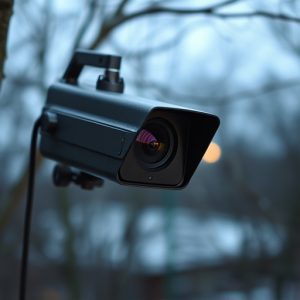Minimizing False Alarms: Advanced Glint Detection for Babysitter Surveillance
TL;DR:Concealed cameras for babysitter monitoring require glint detection technology to overcome low…….
TL;DR:
Concealed cameras for babysitter monitoring require glint detection technology to overcome low-light challenges, enhancing surveillance effectiveness. Advanced algorithms analyze light reflections, suppressing false positives from shiny surfaces like jewelry or lighting fixtures. This ensures clear footage during nighttime hours, enabling accurate individual and activity identification while maintaining privacy. By combining specialized lenses, sensitive image sensors, real-time video feed analysis, and adaptive learning, developers create robust systems that minimize false alarms, providing parents with trustworthy peace of mind.
In the realm of nighttime surveillance, concealed cameras play a vital role in ensuring baby sitter accountability. However, monitoring these hidden devices presents unique challenges due to low-light conditions and potential false alarms caused by glints. This article delves into understanding glint detection mechanisms for enhanced nocturnal security. We explore technical solutions, including advanced algorithms, to mitigate false alerts. By implementing these strategies, parents can efficiently utilize concealed cameras for babysitter monitoring, fostering peace of mind in the digital era.
- Understanding Glint Detection in Nighttime Surveillance
- Challenges of Concealed Camera Monitoring for Babysitters
- Technical Approach: Implementing Glint Detection Algorithms
- Effective Strategies for Minimizing False Alarms in Dark Conditions
Understanding Glint Detection in Nighttime Surveillance
Glint detection is a critical component in nighttime surveillance systems, especially when it comes to concealed cameras for babysitter monitoring. In low-light conditions, glints from reflective surfaces can obscure important visual data, making it challenging to accurately identify individuals or activities. Advanced algorithms now exist to mitigate this issue by analyzing subtle variations in light reflection and identifying sources of glare. These methods are crucial in enhancing surveillance effectiveness, ensuring that even in the darkest environments, clear images are captured without the interference of unwanted glints.
By understanding the science behind glint detection, developers can create more robust camera systems designed for babysitter monitoring or other covert observation scenarios. This technology allows parents or caregivers to maintain a watchful eye on their children’s activities while ensuring that privacy is respected. With accurate glint suppression, surveillance cameras can capture high-quality footage, making it easier to discern details and verify information during nighttime hours.
Challenges of Concealed Camera Monitoring for Babysitters
The implementation of concealed cameras for babysitter monitoring presents a unique set of challenges, especially in low-light conditions during the night. One of the primary difficulties is the issue of glint detection, where reflections from shiny surfaces, such as jewelry or glasses worn by the babysitter or even lighting fixtures in the room, can interfere with camera sensors, creating distracting visual artifacts. These glints not only impact image quality but also might obscure important behavior or interactions within the frame.
Overcoming this challenge requires sophisticated algorithms and careful lens design to minimize false positives while maintaining clear, informative video footage. Night-time monitoring demands enhanced low-light performance, often achieved through specialized lenses with larger apertures or sensitive image sensors. The goal is to capture sharp, detailed images in dim lighting without amplifying the effects of unwanted glints, ensuring a trustworthy and reliable monitoring system for parents seeking peace of mind while their children are in someone else’s care.
Technical Approach: Implementing Glint Detection Algorithms
The technical approach to glint detection in night-time surveillance, particularly for Concealed Cameras for Babysitter Monitoring, involves sophisticated algorithms designed to identify and mitigate lens glints. These algorithms analyze video feeds in real-time, focusing on detecting sudden reflections from surfaces that could indicate the presence of a hidden camera. By employing machine learning techniques, the system learns to distinguish between natural light reflections and artificial glints, significantly reducing false alarms.
The process begins with image preprocessing to enhance contrast and suppress noise, followed by feature extraction methods like edge detection and texture analysis. Advanced algorithms then compare these features across consecutive frames to identify any unusual patterns or changes indicative of a glint. This approach ensures that even subtle variations in lighting conditions do not interfere with the detection process, maintaining accuracy in diverse environments.
Effective Strategies for Minimizing False Alarms in Dark Conditions
Minimizing false alarms is crucial when employing camera lens glint detection in low-light settings, especially with concealed cameras for babysitter monitoring. To reduce false positives, several effective strategies can be implemented. One approach is to utilize advanced image processing algorithms that can intelligently analyze lighting conditions and differentiate between a child’s movements and external glints. These algorithms adapt to varying light levels, learning patterns of normal behavior to more accurately detect actual activity.
Additionally, using infrared or thermal imaging technology can significantly reduce false alarms in night-time monitoring. Unlike traditional visible-light cameras, these systems capture heat signatures, making it easier to distinguish between warm bodies (like a child) and reflective surfaces that might mimic glints. This ensures more reliable monitoring without constantly being triggered by minor light reflections.
The implementation of concealed cameras for babysitter monitoring presents unique challenges, particularly in nighttime surveillance due to glint detection. By understanding and addressing these issues through advanced glint detection algorithms, it’s now possible to significantly enhance the accuracy and reliability of darkness-based monitoring. The strategies outlined in this article—focused on minimizing false alarms and optimizing performance under low-light conditions—are essential steps towards creating a safer, more efficient system for both babysitters and parents alike.


